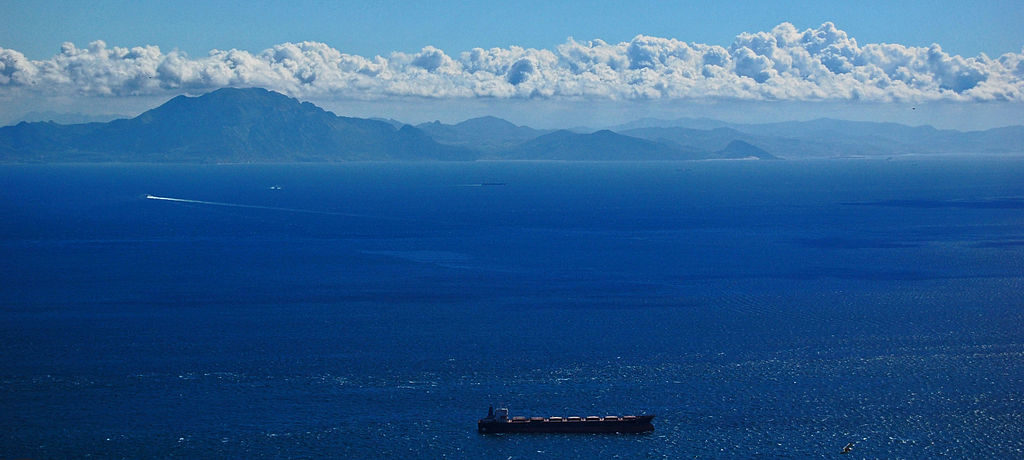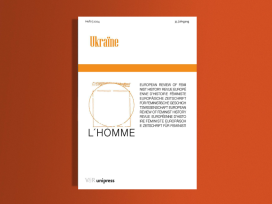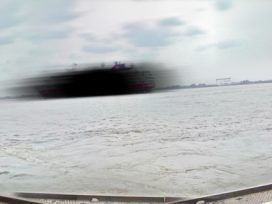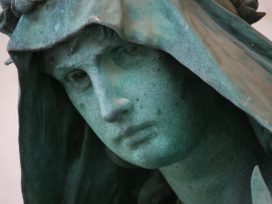Since antiquity, the harbours of the Mediterranean have exerted a fascination over travellers and cultural researchers.
Visiting them today, however, one is presented with no more than a shadow – part run down, part picturesque – of their former grandeur and importance. These ports once lay at the heart of the first trans-Mediterranean phase of globalization, the central axis of which shifted to the Atlantic in the sixteenth century. Nowadays, the turnovers of even the larger Mediterranean harbours, such as Istanbul or Marseille, are easily outstripped by the container terminals in East Asia and the Gulf.
The Mediterranean serves as a passageway for around one third of all global transports of crude oil and natural gas. Its harbours are largely the destinations of cruise liners and ferries, just as its airports are the starting and end-points for beach holidays and city breaks. Fishing, another an icon of southern Europe, has also changed in character. The photograph in the pizzeria of a fisherman mending his net promotes the Méditérranée brand but bears little connection to the reality of the heartlands of mass tourism.
Due to the expansion of EU fleets and the invasion of Asian fishing boats, overfishing endangers species such as tuna and swordfish; in many cases, the maximum sustainable yield can no longer be reached and overall fishing quotas have decreased substantially. The current United Conventions Law of the Sea grants each state an exclusive sovereign right over a coastal zone, extending up to 200 nautical miles into the sea, for the exploration and exploitation of resources. This is in addition to the continental shelf, the (notional) extension of the continent underneath the surface of the sea. In the “small” Mediterranean, this gives rise to much overlap, which could well become a point of conflict in the future – especially when it comes to gas fields and offshore drilling rights.
However the sea incurs most damage from its interaction with land use – industrialized agriculture, fierce urbanization and holiday paradises, with their high levels of consumption and waste, are what puts the most strain on the Mediterranean. Tourism and industry enter into competition, but they are also directly related. Salinization, eutrophication (caused by effluents) and algal growth pose a further danger to the Mediterranean ecosystem that is warming as a result of climate change.
The Rhône and Po rivers, in particular, carry copious masses of heavy metals and chemical substances into the Mediterranean; nitrates and phosphates, which enter the rivers through permanent over-fertilization, cause algal bloom to proliferate on coasts where water exchange is restricted. Freshwater inflow is decreasing constantly, compounding disadvantages connected to the slow rate of salt water renewal in the Mediterranean (every 80 years). According to estimates, the Mediterranean annually absorbs 500 million tonnes of slurry, 600,000 tonnes of nitrate fertilizer, 200,000 tonnes of phosphorus fertilizer and many further thousands of tonnes of heavy metals and radioactive waste, primarily from French nuclear power stations. Coastal dwellers, seafowl, crustaceans and fish are severely affected by these toxic inflows. The coasts of northeast Spain, the French Riviera and the Adriatic are particularly contaminated.

Marocco as seen from Gibraltar. Photo: Bachmont/Wikimedia CC
Shipping, oil harbours and refineries pollute the Mediterranean with toxins; a constant convoy of tankers moves between the Suez Canal and Gibraltar. A tanker collision causing an oil-spill would be devastating for the entire Mediterranean ecosystem, as was demonstrated by the heavy pollution of the Lebanese coast in 2009. An estimated 800,000 tonnes of oil flow into the Mediterranean annually, making it among the most polluted seas in this respect too. The waste generated by cruise liners, in particular, equals that of small cities and is not always disposed of according to regulations; the high carbon emissions these popular fleets emit are another matter.
The harbour cities of the Mediterranean are still located at the intersections of global networks, but they no longer possess a sense of self or vitality. The impression given today by cities like Genoa, Almería, Palermo or Piraeus corresponds all too closely to the image of the PIGS. This porcine acronym – regardless which stockbroker, Eurocrat or clown though it up – stands for a crisis that concerns the entire European Union. Many in the north would be happy to cut loose of the quartet at the earliest opportunity, while the dominant mood in the south is one of “let’s break the yoke of Brussels”. Together, they evoke the image of a nation-state yet more incapable of regulation or effective action than the increasingly challenged supranational community of the EU.
The southern periphery of Europe, extending from Portugal to Greece via the North African states, is regarded as a zone of threat, almost like the Eastern Bloc during the Cold War. The South – formerly a political compass point generally evoking positive and carefree associations in the popular imagination and in political culture – has been designated by politicians and the popular opinion as the source of the greatest security risks: Islamist terrorism, “contagious” euro-collapse and waves of refugees from the global South.
History, territory, empire
A supranational construct of Europe that imposes boundaries but also makes them negotiable has contradiction built into its genetic code. Looking at maps of Europe at various times since antiquity, this hardly seems new – Europe’s external borders as well as its internal ones have shifted infinitely often. However, the era of nationalism and the nation-state – with its illusion of the coincidence of territory, language, history and collective identity – has encouraged a certainty of definition more incompatible than ever with a porous external border. The European Union, as a “supranational partnership of convenience that is, as a matter of principle, open to expansion”, has borders that are inherently fluid; they are regulated by European law and notoriously contested in border regions.
In the Mediterranean space – the “middle sea” between Europe, Africa and Asia – these fluid borders are all the more problematic, since they cannot be symbolized by a fence or equivalent territorial demarcation. Instead, borders literally disappear into the shimmering horizon and can only be maintained through the occasional patrol. Here, the experience of globalization contemplated by Georg Simmel over a century ago becomes social fact: borders are cultural regulations that (can) take form spatially. The European Union is thus best understood through its borders.
But its borders are also where its sovereignty is most strongly under attack. Ultimately, this is an expression of the perennial problem of European identity. It is an identity that has always been ex-centric, since much that is “European” hails from Asia (Minor), and always ex-territorial, since Europe exported its achievements to the rest of the world in both peaceful and aggressive-colonial ways. The instability of the borders to the south (and to the east) becomes almost physically tangible in the Mediterranean space: in water, boundary lines become fluid and ambiguous and their validity is contested. The weather, the conditions of the ships, and patrols add to the uncertainty.
Until recently, the Mediterranean was a hotbed of instability, not to say a combat zone. This is something forcefully evoked in Mathias Énard’s extraordinary novel Zone, whose protagonist, like some furious Achilles, harkens to the echo of past battles and retraces more recent massacres – “from Homer’s Trojans to Jean Genet’s Palestinians, from the Spanish Civil War to the Algerian War, from the crimes of the German occupying force in Greece and the deportation of the Jews from Thessaloniki to the murderous collapse of former Yugoslavia” or as another review put it, “from the Battle of Thermopylae to Napoleon’s Montenotte Campaign, Gavrilo Princip’s pistol-shot, the deportation of the Greek Jews, the slaughter of the Palestinians in the camps at Sabra and Shatila, the disembowelment of a Serbian grandmother with her crucifix”. In Serbia, the Mediterranean is occasionally called the “blue cemetery”.
If Mediterranean politics are to be realistic, they must be aware of this history of violence so as not to have to experience it anew. The process of becoming history can also, however, teach us about the ways in which the Mediterranean space, with its harbour cities and its islands, was peacefully interwoven and politically, economically and culturally connected. The concept of the polis was famously developed and put to the test in the Mediterranean by one of the world’s first naval powers – the city-states of the Delian League – in the fifth century BC. Their symbol was the Acropolis in Athens, whose construction was ordered by Pericles and which has now become the tumbledown icon of the Mediterranean “pigsty” in the evening news.
Without wanting to idealize this league of poleis (hoi Athenaíoi kai hoi sýmmachoi) and render it excessively topical, it nonetheless contained a political core relevant to how we might think of contemporary transnational cooperation: a horizontal association, unusual for its time, of small cities granting democratic involvement to their full citizens, emerging as political power in place of an oriental land power, the despotic Persians. Symmachy allied city-states on the Greek mainland, in western Asia Minor, in Thrace and on the Aegean Islands; their meeting-place was first the Cycladic isle of Delos, then Athens, while the League’s financial resources, amassed through members’ tributes, were kept in the temples of Apollo or Athena.
Founded as a defensive front against the Persians, whom it defeated at the Battle of Salamis, the League became an instrument of Athenian hegemony. Colonization went hand-in-hand with the export of democracy, until the League came primarily to serve the interests of domination and exploitation – then, as now, democracies waged wars of aggression. Athens’ brutal attack on the insubordinate inhabitants of the small island of Melos is evidence of this, as is the environmental crisis that took place in the fourth century BC, attested by archaeological finds, caused by slag heaps from lead mines and radical deforestation for the purpose of acquiring firewood to fuel furnaces.
Whereas older empires (with the exception of the Vikings) were land-bound, in modern times the sea forms the natural and systemic environment of the international state order. The crystallization of modern statehood and economy was substantially advanced during the “age of discovery”, a process of trans-Atlantic, globalizing colonialism that took place first under the aegis of Portugal and Spain, then the Netherlands and Britain; international relations, international law and free global trade to a great extent developed on this basis. Here, the Mediterranean was no more than the starting point from which the Florentine Amerigo Vespucci and the Genoese Christopher Columbus crossed the Atlantic, leaving from Lisbon and Cadiz.
Maritime expansion differed considerably from terrestrial expansion in that it was neither guided nor constrained by borders. This de facto universalism, or spontaneous cosmopolitanism, left a lasting mark on maritime law and relations of trade and traffic that span the world today, however it also increasingly became a function of terrestrial development, based upon the composition, concentration and cooperation of nation-state systems. From the sixteenth century onwards, the Mediterranean was relegated to the periphery.
Culture, trade, migration
A group of researchers headed by Swiss-Slovenian historian Desanka Schwara has described the Mediterranean region as a nested structure of diaspora communities. In imperial spaces, migrant milieus were founded on the basis of sea long before modern nation-states were shaped and consolidated. The most important representatives of these communities were merchants, mariners and pirates, people who were highly mobile, who placed great importance on their freedom of movement and who – in the interests of profit and booty – were bound not by the loyalties of nations but those of religion and the extended family. The Mediterranean lay before them as an expanse for acquisition of goods, passengers and ideas; they turned it into a dense communication zone of different world-views and rivalling beliefs, which became manifest in a chequered calendar of religious holidays. At the same time, the boundaries between sanctioned trade and criminal and clandestine privateering, between theological dispute and missionary zeal, were fluid.
The Mediterranean as zone of diaspora, in which “routes” counted more than “roots”: this view must not lead to the romanticization of mobility and deracination, for in earlier epochs, too, migration was often violently induced. In and of itself, diaspora – literally “dispersal” – is not the breeding-ground of innovation and cosmopolitanism; it only becomes this under favourable circumstances of urban tolerance. The more neutral term “networks” thus seems more apt. Be that as it may, the physical interactions and imagined bonds in the Mediterranean region established neither a clear common identity nor a territorial unity; rather, they created “margins” (Natalie Zemon Davis), interstitial worlds. These hark back to Europe’s cultural origins in Mesopotamia and radiate into the north and south Atlantic regions, the colonized areas of Africa and Asia, and the many Mediterranean diaspora communities worldwide. In this sense, Méditerranée can be found with the Sopranos in New Jersey, the Papakonstantinous in Melbourne, and the Mandelbaums in Los Angeles and Shanghai.
Since the time of the Phoenicians and the Etruscans, networks between city-states have been especially important for Mediterranean worlds; their exchanges, as Fernand Braudel and others demonstrated, endowed the Mediterranean area with factual unity. As long as this network functioned, it was possible for the Mediterranean region to lie at the centre of the world and to be the arena of the first stage of globalization. Its influence and formative power waned as globalization expanded along the Atlantic axis and as international relations came to be informed by the Westfalian sovereignty of denominationally homogeneous nation-states and the race for imperial spheres of influence.
For this reason, it is necessary to recall the historical urban systems whose vitality derived from the existence of a public space frequented and shared by all (male) communities. In this space, the palette of professions, nations and denominations unfolded; it was able to integrate a high degree of heterogeneity and afforded considerable latitude to minorities and outsiders, opening up possibilities for social ascent and political careers. In it there developed a wealth of male-dominated systems of patronage and clientele, business connections and networks of friendship – unique in world history; the public space was where people met in taverns, coffee houses and ballrooms, where charity was practised, amidst banks and pawn shops.
One fact merits at least a brief note: this “Christian Occident” was strongly influenced and informed by Jewish and Muslim minorities and elites, while the Arabs only reached their own high level of development as a result of expansion to the south of Europe via Mesopotamia, Syria and Egypt. In the late Middle Ages and the early modern era, cities like Damascus, Cairo, Kairouan, Fes, Palermo, Córdoba and other places in al-Andalus were the centres of the religious and scientific world. Theology, philosophy, jurisprudence, mathematics, astronomy and other subjects blossomed, as did literature, architecture and medicine. It was at the Toledo School, in particular, where the leap from antique culture to modern Europe was made; Arabic was the lingua franca in which important works of world literature were composed, including those of the Golden Age of Jewish literature.
The Reconquista, the expulsion of Islam and of Jews from the western Mediterranean area, dealt a major blow to intellectual development in Catholic Europe, just as it did in the Arab world. However, without al-Andalus’s achievements in translation and transfer, neither Spain’s ascent to become a world power nor the later global dominance of western Europe would have been conceivable. Those who dismiss such reminiscences as “multiculturalist” romanticism are wrong. No one is denying the political and theological competition between the monotheistic denominations, or the conflicts that on numerous occasions were settled through violence. But no one should misjudge the achievements of this epoch and hence its function as model for a Mediterranean union of a new type, which it has increasingly come to be since 2001, for reasons of political expediency.
The powers that long ago characterized the Méditerrannée, and that are now probably lost beyond retrieval, ought not to be held up as a contemporary ideal. Certainly, the downfall of the Mediterranean world since the sixteenth century, with all its diversity, represents a history of loss. However it is a history that must be observed soberly. At the same time, it is legitimate in the current crisis to search in that history for the basis for a polymorphic structure of contemporary Europe – a structure that, while devoid of any pressure to imitate, elevates the network of city-states to the status of model and hub of Euro-Mediterranean unification. The Mare nostrum would thus be decolonized for good and its national, ethnic and religious antagonisms mitigated.
In the coastal regions and island zones of the Mediterranean, city-states with a high awareness of their autonomy first emerged as antipodes to territorial states and later functioned as lively and self-confident enclaves. It is therefore no coincidence that much Mediterranean scholarship, including fiction and essays, refers to these urban agglomerations more than to the provincial and agrarian hinterland formerly considered by many anthropologists and travellers as the Mediterranean world’s centre of calm and guarantor of stability. There are now an infinite number of centres on the map of the Mediterranean: the towns established by the Phoenicians and Etruscans, Athens, Carthage and Rome in classical antiquity; the residences of the Carolingians and the Hohenstaufens; the large and small metropolises such as Byzantium and Granada, Venice and Ragusa – the list goes on. It was in the Mediterranean region that the modern city as type, with its clear pattern of urbanity and urbanization, developed par excellence, its model character lasting up until the American (suburban) city emerged and became dominant in the nineteenth century. Even today, most residents of the region live on the coastal strips and on deltas (most densely in the merging metropolitan region of Cairo/Alexandria, in megacities such as Istanbul, and in agglomerations around Athens, Algiers, Rome, Marseille and Barcelona). Viewed by night, the urban centres of light trace a line along the coastline like a string of fairy lights.
From PIGS to partners: Developmental prospects
Reasons for why nearly all the Mediterranean countries have, in social and economic terms, lagged behind in recent decades are now much discussed (and ethnicized). Over reliance on revenue from commodity and agrarian exports, tourism and money transfers from migrant workers meant that their economies failed to keep up with capitalist globalization in the 1970s. Another reason is that, since the 1980s, parts of these same economies have adapted rapidly to global casino and kamikaze capitalism, investing revenues in speculative real estate and financial transactions, while leaving intact essentially anachronistic state apparatuses and social structures. The consequences of this are manifest today. Mental and institutional path dependency is difficult to overcome, yet nothing less than a radical change of direction is demanded of these crisis-ridden societies. This cannot succeed through external “advice” or pressure, but only in the framework of a pan-European sustainability offensive that desists from the unfavourable mix of austerity and blind growth.
A new type of Mediterranean union requires a more ambitious and far-reaching framework, in which the loose and disparate elements of Mediterranean policy to date are better adjusted to each other and made more sustainable. A convergence of this kind would complete the process of decolonization and confer an important role on the southern European EU member-states. The young people of the Mediterranean need a perspective beyond stagnation and emigration, pauperization and precariousness, authoritarianism and violence. A number of key political fields come to the fore: energy supply, tourism, external trade, environmental conservation and the knowledge economy.
– To date, energy supply and export patterns on the southern periphery barely reflect the potential of this sun-drenched and wind-swept zone for generating renewable energy. Renewable energy from the south must not only be incorporated into northern European electricity networks but, also and above all, used to promote sustainable development in the countries themselves, as well as in sub-Saharan Africa. This will enable a break with the vicious cycle of oil dependence, climate-damaging economic activity and debt.
– The Mediterranean region still claims approximately one-third of global tourism and this has had a deep influence on its infrastructure and mentality. At the same time, decades of mass tourism has caused severe ecological and economic damage. Instead of being a mass influx from the North to the service centres of the South, tourism needs to be transformed into a respectful and creative encounter between the two cultures.
– Despite industrial development and the growth of a service sector, the Mediterranean countries have remained caught in an asymmetric division of labour with the rich EU countries. This has kept them in constant dependency and, until the 1980s and again now, caused unqualified and qualified workers to emigrate. An agrarian economy that is ecologically sensitive and much better adapted to local needs and markets needs to be negotiated, as does a more balanced trading system with the North and a sensible migration regime.
– The vulnerable ecological basis of the sea must be protected by promoting sustainable fishing, preventative coastal preservation and appropriate offshore energy services. The Méditerranée must once again become “our sea” in the European consciousness.
– The Mediterranean area lacks a sustainable, locally coloured knowledge economy that transcends cultural and religious boundaries and is oriented toward the histories of the various cultures. Connections to the past may have been broken, but there is truly no shortage of role models.
– This programme of transformation must be accompanied by ongoing cultural and scientific cooperation, oriented towards the needs of the younger generation, within the framework of existing EU programmes (Erasmus, Leonardo da Vinci, Jean Monnet) and the relevant sections in the association agreements.
EU “rescue funds” and “structural assistance” only make sense in the mid- to long-term if they are directed at alternative energies, sustainable tourism, fair trade and maritime development (among other things). Only then can vague and ad hoc restructuring lead to sustainable development and the political tutelage of the North turn into cooperation between equals. Of course, these opportunities for development have only been broadly outlined above (and, given the crisis-management thus far, are counterfactual). The key point is that decision makers and the public debate need to provide the EU Growth Pact with perspectives for the future, perspectives that include the institutional reform of the EU and the Mediterranean union.
Mare nostrum: Towards a politics of joint responsibility
Someone in Germany, Sweden or Latvia who speaks of “our sea” will immediately think of the Baltic; someone in Norway or Frisia will think of the North Sea. If the main direction of holiday travel is considered, it would be appropriate to extend this title to the Mediterranean, raising the question of the toll that distant neighbours would be willing to pay. Around a third of global maritime trade takes place in the approximately 450 harbours and terminals of the Mediterranean while around a quarter of global mineral oil trading takes place along its sea routes; in addition, approximately one million cruise ship tourists disport themselves annually on its waters. Yet the challenges of marine conservation remain unmet due to insufficient cooperation between neighbouring Mediterranean countries and the powerlessness of the EU to intervene. A communication published by the Commission in 2009 singles out the fundamental problem:
At present, a large part of the Mediterranean marine space is made up of High Seas. Approximately 16 per cent of the marine space is made up of Territorial Sea and 31 per cent is made up of diverse maritime zones, often contested by other coastal States due either to the extent of the claim or its validity. This set up means that a large part of the waters of the Mediterranean Sea is outside the areas under the jurisdiction or sovereign rights of coastal States. Consequently these States do not have prescriptive and enforcement powers to regulate comprehensively human activities beyond such areas, including for the protection of the marine environment and how fishing and the development of energy sources is carried out. Beyond these areas, States can only adopt measures with regard to their own nationals and vessels.
The communication also identifies two major weaknesses:
First: in most Mediterranean States, each sectoral policy is pursued by its own administration, just as each international agreement is performed within its own set of rules, rendering an overview of the cumulative impact of maritime activities, including at basin level, a difficult objective to attain. Second: the large proportion of marine space made up of high seas makes it difficult for coastal States to plan, organize and regulate activities that directly affect their territorial seas and coasts. The combination of these two elements gives rise to a situation where policies and activities tend to develop in isolation from each other and without proper co-ordination among all areas of activity impacting on the sea as well as all local, national, regional and international actors.
In the opinion of the Commission, “the semi-enclosed nature of the Mediterranean Sea and the trans-boundary impacts of maritime activities call for increased co-operation with non-EU Mediterranean partners”. The international Convention on the Law of the Sea, which was ratified by all EU countries and all Mediterranean coastal states with the exception of Turkey, Syria, Israel and Libya, offers some good starting-points, however there is a significant lack of enforcement and a dearth of effective surveillance, especially concerning fishing. To date, member-states’ commitment to improving the environmental standard of the Mediterranean waters by 2020 through “integrative marine strategies'” and by “applying an ecosystem-based approach” has had little effect. Nor have additional coastal states been involved in the Barcelona Convention and the General Fisheries Commission for the Mediterranean.
Since 2009, the suggestions and resolutions of the Commission have not been sufficiently taken into account and acted upon. It thus remains vital that “High Level Focal Points of Member States regularly address the Mediterranean Sea in order to discuss progress made in integrated maritime-policy making” and that the Commission encourages member-states “to exchange best practices in integrated maritime governance, in particular through the European Territorial Co-operation Objective programmes for the Mediterranean”.
It is only under these conditions that marine conservation, with all its different aspects, will be possible; only then can there be sustainable fishing and a non-detrimental energy industry in the Mediterranean. The harbour cities of the Mediterranean Sea might then be able to reclaim, in a very new way, the exemplary role they held in Europe as recently as the seventeenth and eighteenth centuries.








